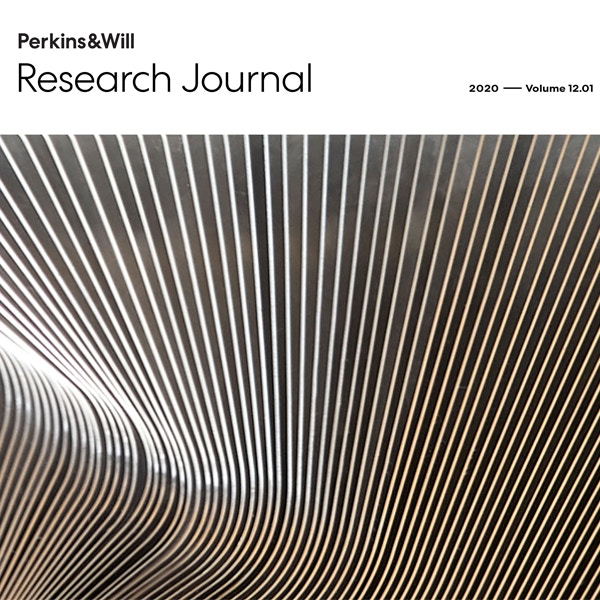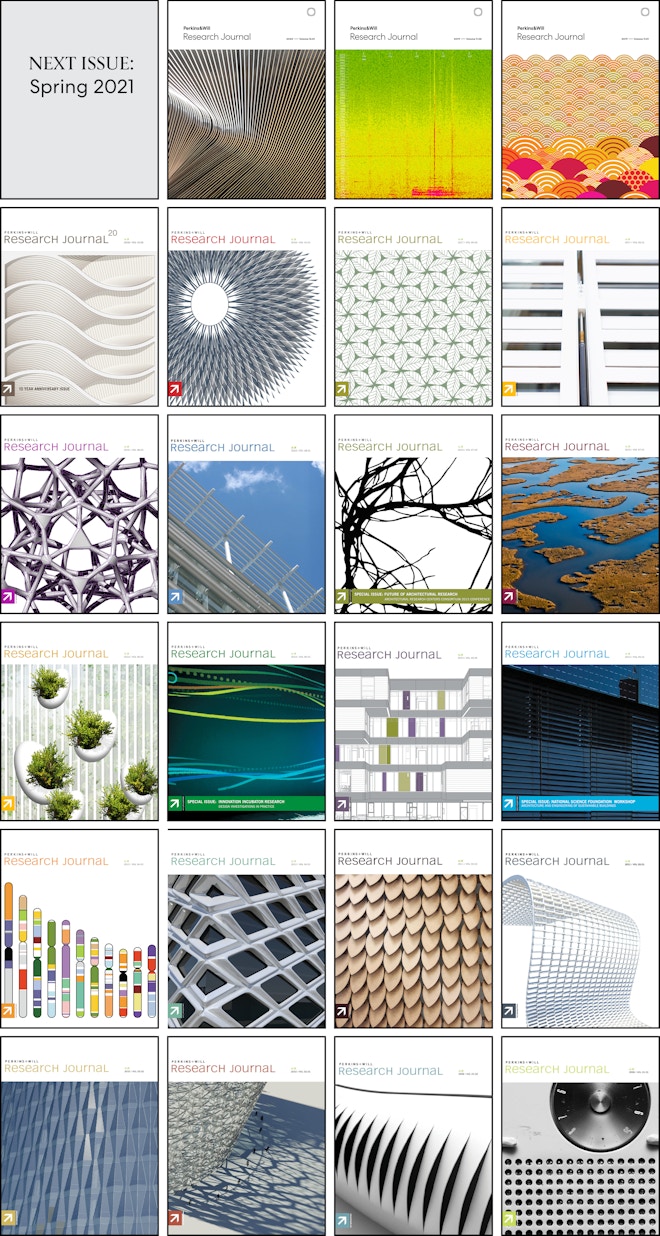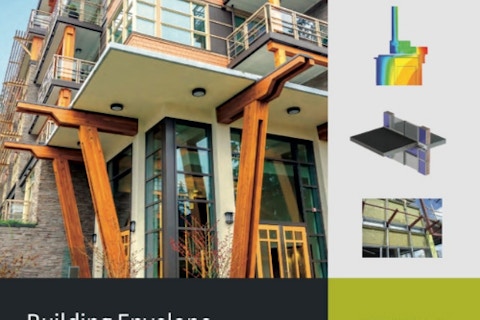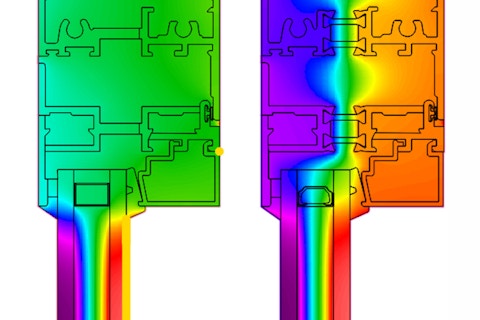
The Perkins&Will Research Journal: Contributions from Practice-Based Design Research

Today the design professions still struggle to understand the nature of research in our work. There is a systemic lack of clarity in defining research in design and developing metrics to evaluate the value behind design interventions and applications. Research, therefore, straddles the line between practice and academia, which left us wondering if there was some way to integrate the two seemingly divergent worlds.
Creating new knowledge through research and development provides immense value and makes a phenomenal contribution to any organization that prioritizes innovation at the core of its application and pedagogy to its work approach. But sharing the results from these critical inquiries creates value for our entire profession and industry-at-large.
As designers, we are taught that original thinking, uniqueness, and our gut feelings are things to be celebrated, but these can be antithetical to the dispassion needed in scientific research. These investigations, after all, are not necessarily supposed to give us answers; rather they tell us how to explore, probe, and examine myriad issues. And they provide rules that we follow to ensure that outcomes are both valid and usable across disciplines.
The challenges that are facing the design profession today are multi-faceted, and only through dedicated research we can address and find solutions to environmental, social, technological, economic, and cultural problems. A crucial step in any research effort is documentation of the research process, its objective, and dissemination of its results.
The Perkins&Will Research Journal, launched in 2009, was important and transformational. Unlike the imprecise and soft research that permeates most efforts, research articles that are considered for publication follow rigorous procedures, are externally peer-reviewed, and provide cogent outputs. Through this journal, we have established a method for collecting, reviewing, and reporting results of rigorous research studies, aiming to find solutions to challenges that are affecting the vast gamut of our design profession. And, by sharing these results in an open-source format, we have initiated and made possible a new era for practice-based design research and initiated a culture of innovation, collaboration, and knowledge sharing in our profession, where transparency plays a key role.
The insights we are gleaning—are only just beginning to transform the design profession through real-world applications. Design projects can take years to complete, and they often require even more time after that to measure and evaluate their performance. To truly effect positive change in our industry, we can never stop asking questions, and we can never stop pursuing the answers.
As the first of its kind peer-reviewed open-asset practice informed design research publication initiated from the architecture and design industry, over the last 12 years, we have published 107 articles, written by 152 authors, and peer-reviewed by 201 research experts from academic institutions, research organizations, public agencies, and private entities. These articles focused on diverse research subjects, including sustainable and energy-efficient design, building performance, advanced building technologies, computational design techniques, economic impacts, professional practice and delivery, impacts of climate change on the built environment, building materials, digital fabrication, and many other topics. The investigated building typologies also covered a large spectrum of different building types, including healthcare facilities, higher education buildings, schools, workplaces, residential buildings, research laboratories, mixed-use buildings, museums, and commercial buildings. The research methods covered a wide array of research processes, including literature reviews, case studies, simulations and modeling, experimental studies, qualitative studies, and mixed research methods.

Figure 1: Perkins&Will Research Journal covers of all previous issues of this publication.
These articles represent different disciplines within the design of the built environment, including architecture, urban design and transportation, landscape design, building systems and engineering, interiors, planning and programming, and often reported results of multidisciplinary research projects. These articles have been primarily written by Perkins&Will employees, but also include collaborative articles written with co-authors from many different academic institutions, other firms, consultants, and clients.
We have also published three special issues over the last twelve years.
The first special issue, published in 2013, was dedicated to documenting the outcomes of the 2nd Workshop on Architecture and Engineering of Sustainable Buildings, organized by the University of Illinois at Urbana-Champaign and Perkins&Will, and sponsored by the National Science Foundation.
The second special issue, published in 2014, was dedicated to capturing some of the results of the Perkins&Will’s Innovation Incubator program. The program was initiated in 2010 as a micro-grant research program for Perkins&Will employees to support the culture of innovation through small, focused, fast-paced investigative projects.
The third special issue, published in 2015, was dedicated to the Architectural Research Centers Consortium (ARCC) 2015 Conference. The conference was organized by Perkins&Will, University of Massachusetts Amherst, and the University of Illinois at Urbana-Champaign, with the theme “Future of Architectural Research.” This was the first time that the design practice and academic institutions were collaborating and organizing a conference dedicated to architectural research. The intention was to bring together researchers, design practitioners, faculty members, policymakers, educators, and students to discuss the latest achievements in architectural research and to bridge the gap between academic and practice-led research efforts.
Professional organizations have used the journal to improve the knowledge base and provide relevant, peer-reviewed research to all stakeholders involved in creating the built environment (designers, architects, engineers, building owners, builders, policymakers, and planners). Researchers have used the results to extend the studies and in their own research, and the articles published in this journal are often cited in other journals. Academic institutions are using this journal in their curriculum, and results are used to educate the next generation of designers, architects, planners, and researchers.
At Perkins&Will, we have always believed that the uncommon synthesis of curiosity, rigor, and transparency would define a new type of design research. Springing out of this dynamic fusion, our Research Journal instantly became a vibrant and permanent fixture in our intellectual and professional lives.
I cannot overstate how much richer our professions are because Perkins&Will has developed a research journal that is organized not around a single subject; but around a consistent protocol and platform that results in significant additions to the body of knowledge within the design disciplines. It has been a transformational contribution to the “research in practice” world which we feel should be shared to influence and shape the future of the built environment.
The greatest achievement of the Perkins&Will Research Journal is the transparency with which it is prepared and the humility with which it is shared. At Perkins&Will, we are committed to the idea that open-source knowledge makes for a better world.
You can access all the Perkins&Will Research Journals at https://perkinswill.com/research/ and all the individual articles published in the journals at http://research.perkinswill.com/labs/journals/.

Kalpana Kuttaiah, Associate AIA, LEED BD+C
Associate Principal
Perkins&Will
Looking for something specific?
Search our extensive library.
FTI’s SKINS email is the central source for the latest in building skin trends and research.
All emails include an unsubscribe link. You may opt out at any time. See our privacy policy.













